
Ways to manage large-scale food waste
The leading ideas on restaurant waste management for hospitality businesses producing high volumes of food

Jump to a section:
What is food waste management?
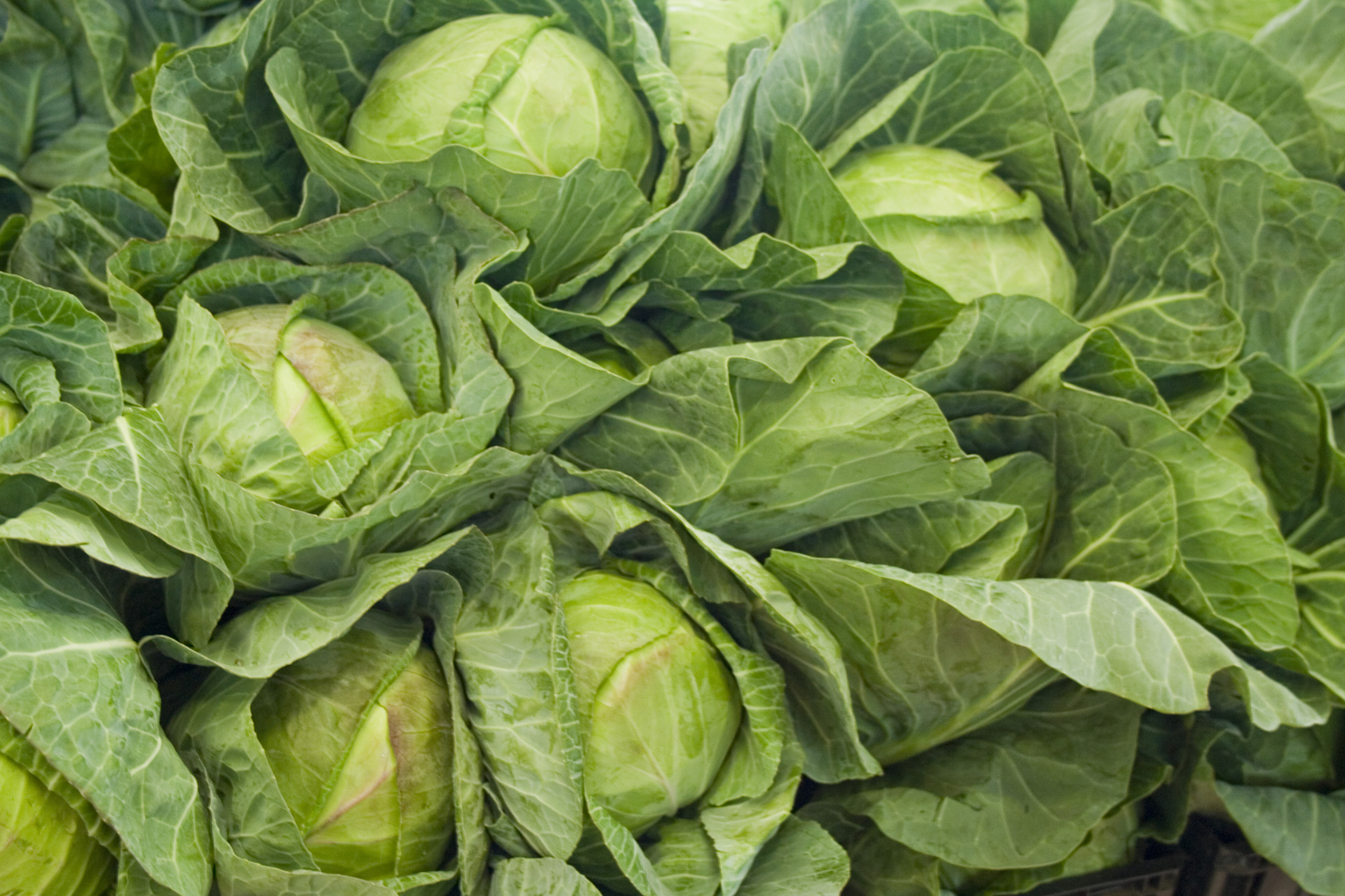
The FAO defines food waste as. “…food appropriate for human consumption being discarded, whether it’s kept beyond its expiry date or left to spoil”.
Food waste management relates to the stages of prevention, recovery, recycling, or food waste disposal that follows.
This includes:
- Food waste tracking and prevention
- Food banks
- Using food as animal feed
- Creating renewable energy through anaerobic digestion
- Composting
- Landfills
%20(1).jpg)
Stages of food waste management
The most important stage of food waste management is reducing the waste of edible food. Traditionally, tracking food waste hasn’t been a priority for commercial kitchens.
The majority simply don’t know how much food they’re actually throwing away, and in turn how much money is wasted. Even if they do, most kitchens are limited to rudimentary food waste tracking spreadsheets, which take up valuable staff time and result in inaccurate data. This causes most businesses to vastly underestimate their food waste.
For hospitality businesses, it’s critical to have a robust food waste tracking process in place to, reduce their carbon footprint and save money. Thankfully, technology has enabled a new era for food waste management, often in the form of software enabled with hardware to fit the rugged kitchen environment.
As an example, in 2019 Winnow began automating food waste management with AI.
.jpg)
Management of Waste
With technology replacing the vast majority of the data collection process, managing waste is now a straightforward five-step process.
- Food is thrown into the designated food waste bin.
- The weight of the waste is logged from the scale under the bin, and the food type is captured on camera.
- This process is repeated over the course of the day and has the capability to include cooking errors, overproduction, trimmings, and plate waste.
- The data is sent to the cloud where it is aggregated, it includes the financial and environmental costs of the wasted food, time of day, and areas in production of high waste. Chefs can view the waste the next day.
- With this insight available in an actionable format, the chefs can now make operational decisions in the kitchen to reduce waste.
Investment in food waste management can yield great returns
Managing food waste can represent as much as
8-12%
of total food spend
Our clients cut their food costs by between 2 and 8%
See how 3 hotels in Asia have successfully cut waste and increased profitability in their kitchens
Food waste management can return up to
1000% ROI
In year one
Typical ROI 200%-1,000% within the first year of using Winnow
See how IKEA Bergen reduced food waste by 45% over the first 12 weeks
Challenges in food waste management
Why is food waste a global issue?
Food waste impacts every country on earth and adversely impacts climate change.
Greenhouse gases are produced at every stage of the food chain, including the methane emitted when organic matter is dumped in the rubbish tip. In fact, according to FAO if food waste were a country it would be the 3rd largest emitter of greenhouse gases (after China and the USA).
The way land is utilised in agriculture contributes to food waste on a massive scale. Arable land used to grow uneaten cereals contributes to 4–15% of food wastage in each region. Shockingly, an area larger than China is used to grow food that is never eaten.
Food waste is also an ethical issue when you take into account the 800 million people who don’t have access to food in the same way as developed countries, and the many people in developed countries living in food poverty.
To solve global hunger, we need to dramatically reduce the volume of food loss within our system.
What are the main causes of food waste?
Food is wasted for a variety of reasons, starting with the initial stages of the supply chain. Processing issues, overproduction, and unstable markets cause food waste before it even arrives at a commercial kitchen.
Once it does arrive, kitchen management plays its part in food waste by overbuying produce, poor planning, and overproduction of food. Oakdene Hollins found that 66% of food waste in commercial kitchens is pre-consumer waste, and 34% is post-consumer waste.
At the final stage, Anaerobic digestion facilities, which turn waste into clean energy, are an option. However, it’s better to reduce surplus food at the outset rather than turn it into energy.

Hotel food waste management
Reducing and managing food waste in order to operate more sustainable hotel kitchens has been a hot topic in the industry this year. MICE (meetings, incentives, conferences, exhibitions) are a big source of food waste, and customers are increasingly looking for hotels that demonstrate ESG credentials. There’s several, excellent examples of hotels that are getting in right.
The team at Marriot Hotel’s Grosvenor House Dubai are constantly looking for new ways to become more sustainable and improve their operations. Winnow helped Culinary Director, Marco Torrasso understand the volume and different varieties of food that were thrown away each service.
With this information, they were able to look into various areas to either reduce the amount of food production, increase the use of various food items or re-use the food for their staff canteen.
As a result, in the first year:
- Food waste was reduced by 72%,
- 50,000 meals were saved in a year
- Approximately 300,000 AED ($81,000) was saved
Catering food waste management
For companies in the catering and services sector, optimising food waste cost is essential.
Amid the complexities the pandemic caused, contract catering emerged as a more agile and resilient industry. Consumer preferences pivoted and now includes a growing focus on sustainability.
The World Economic Forum and Ipsos found that 86% of people want to see a significant change towards a more equitable and sustainable world after the pandemic.
Larger catering companies, like Compass Group or ISS Facility Services, operate thousands, of kitchens across the globe and are taking the initiative to reduce food waste, and enhance customer experience all while saving money.
Food waste management offers huge potential in mitigating greenhouse gas impact and has the potential to save catering operations between 3-8% on food costs.
This equates to millions of tonnes of CO2e annually, and billions of dollars which could be saved.

How management can reduce food waste
When it comes to reducing food waste in kitchens, management play a key role in establishing a culture of waste prevention.
There are six ways businesses can deal with food waste, which are prioritised by the food recovery hierarchy.
- Source reduction. Minimising the amount of food you're buying or reducing the number of items on a menu.
- Feed hungry people. Helping your community by donating food to food banks, soup kitchens, or shelters.
- Feed animals. Helping to sustain the local farming industries to help turn scraps from your kitchen into animal food.
- Industrial uses. Working with local councils to repurpose kitchen items. Wasted oils can be rendered and turned into a sustainable fuel source, while food scraps can be anaerobically digested and help create energy.
- Composting. Repurposing food waste as compost with local crop producers in your community.
- Incineration or landfill. This is not sustainable or environmentally friendly. Measures should be taken to avoid this action for all food waste.
How much food do restaurants need to prepare in advance?
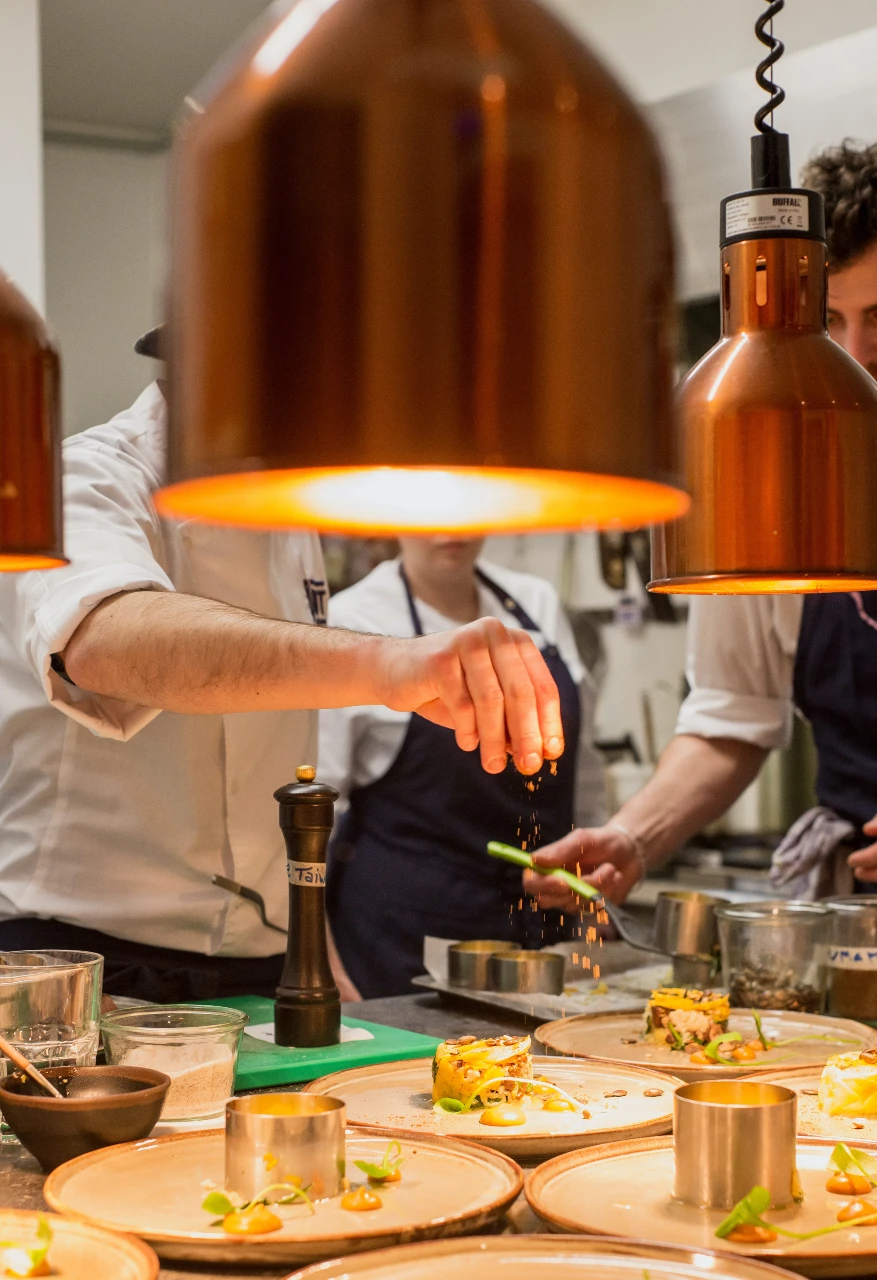
Most restaurants fall into two categories:
- Restaurants that prepare a lot of food in advance.
These businesses prepare more than 50% or 75% of their food before service begins. This category includes, Buffet-style restaurants, catering in businesses, hospitals, or education. Due to the complexity of forecasting in these environments, food waste is a huge issue.
2. Made to order kitchens.These kitchens follow an à la carte menu and include customised dishes, cooked to order. Although some food groups like vegetables or sauces are prepared in advance here, it’s often less than half of the total food produced during the service.
Restaurants work out how much food to prepare in advance by using a simple math formula. That formula is (Projected Usage * Buffer %) – Quantity on Hand.
Before placing an order, a full inventory is completed to see how much of something they have on hand. Once your kitchen’s completed a food waste audit, and plate waste is calculated, a more accurate picture of how much food to prepare is painted.

How long can restaurants keep food?
In many parts of the world, there are strict food safety laws which mean that edible food cannot be sold after being cooked. Particularly with meat products, there are health concerns over products that are not in temperature controlled and hygienic environments. For example, in the UK, pizza chains serving buffet style pizza are only allowed a matter of minutes before they have to discard any leftover slices.
In the US, there is now a food waste ban in Massachusetts on establishments that are throwing away more than one ton each week. This is because the landfills are nearing capacity. As a result, restaurants are seeking other solutions like reducing waste in the first place and stepping up food donation.
In our homes, there is much we can do to in reducing food waste in our homes. We throw away kilos of fruit and vegetables, and other types of edible food. This is particularly true in the developed world where food is relatively cheap, and there is constant accessibility to food.
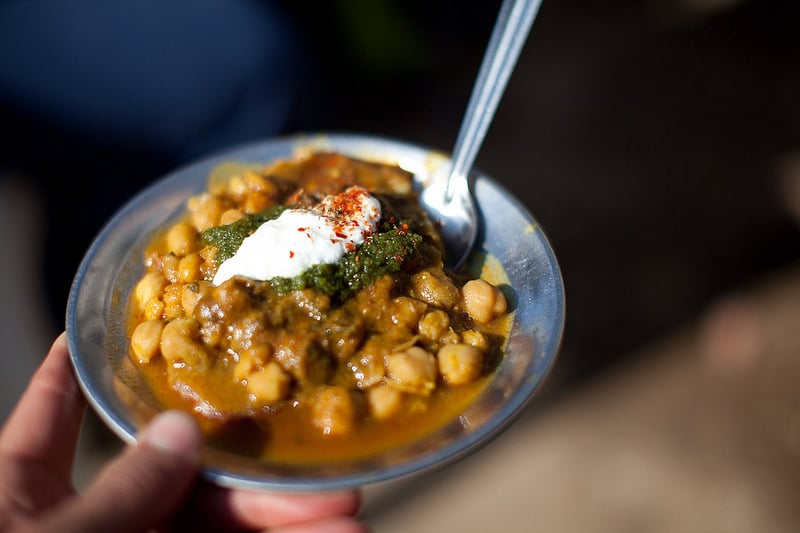
What can restaurants do with leftover food?
For any food that is not sold, such as sandwiches or bakery items, companies can use secondary markets like Too Good To Go to resell the food to the public at a lower price. One example is Accor Hotels who have partnered with the app to save more than 10,000 meals.
If restaurants do not sell the remaining food, they can either donate to food banks and either look at anaerobic digestion or a composting program. Read this blog on 5 tips where you can donate leftover food, including food banks and other community food programs. There are also many companies stepping up in times in need, as shown in our Hospitality heroes blog here.
What’s the best way to manage food waste in restaurants?
There’s a number of things you can do to avoid food waste. Conducting a food waste audit is one of them.
It’s important to get an understanding of the stage of service or point during the day which is particularly high in waste produce, so you can put measures in place to prevent this.
The complexity of gathering this information depends on the type of operation you work in, but see if you can estimate the answers to the following questions during your next service:
- What’s the top three food produce items being thrown away throughout the day?
- What’s the weight and value of the most valuable item?
- If you wasted produce to the same level every day, what would that figure look like over a year of service?
If you can answer these questions, you’ll be surprised by the value of the products being thrown away. Making decisions informed by this data is key to avoiding food wastage in your kitchen.
Carrying out food audits manually, on an ongoing basis, is a time-consuming, inaccurate, and laborious process.
This is where technology can support this manual data collection and analysis, and ensure kitchen teams can get back to cooking while having the insight needed to reduce food waste and kitchen costs.
Managing food waste is beginning to have legal implications for businesses too. In France, it’s now illegal for supermarkets to throw away food.
Fines can be up to €75,000, or two years imprisonment.
Read more about how France is leading the food waste agenda.
What types of food get wasted most?
There’s no comprehensive global database that provides a full picture of food waste, however, thanks to Love Food Hate Waste, we do know the top five most wasted foods in the UK are:
Bread
Over 240 million slices of bread are discarded every year.
Milk
Around 5.9 million glasses of milk are wasted each year.
Potatoes
5.8 million potatoes go to waste each year.
Cheese
A staggering 3.1 million slices of cheese are thrown away every day.
Apples
Over 1.3 million apples are thrown away each year.
In the supply chain and in our grocery stores, fruits and vegetables are wasted in large volumes because of their short shelf life and perishable nature.
Reducing the number of dairy products purchased like milk and yogurt is also an area where there is the potential for high financial and environmental impact.
Find out more about why and where food waste happens—and how you can tackle it.
Tools for food-waste management

There’s a growing number of tools that help businesses and individuals track and manage food waste. In restaurants, these can scale from inexpensive and low maintenance tools costing less than $50 dollars to solutions that manage waste in large commercial environments.
For instance, our packages offer artificial Intelligence enabled tools through to basic digital measurement via a tablet, with a range of packages and food waste management software that will suit different kitchens and sectors.

What is a food-waste audit?
A food waste audit involves capturing all organic waste within your kitchen over a short, measurable period of time.
The drawback of doing a food waste audit as opposed to measuring food waste over a continued period of time is that you can’t reliably measure change.
With ongoing food waste management can you track trends in the data and make sustained reductions.
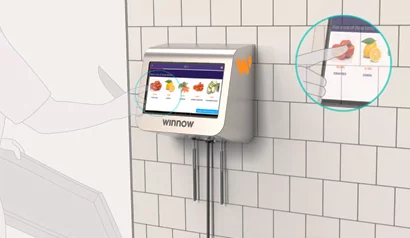
Who are the leading food waste management companies?
Food waste management in restaurants is still a nascent sector, and there are few companies that can deploy solutions to companies around the globe.
Winnow is the only food waste management company that can serve kitchens around the world using AI technology —Winnow Vision— to help automate the process of waste management.
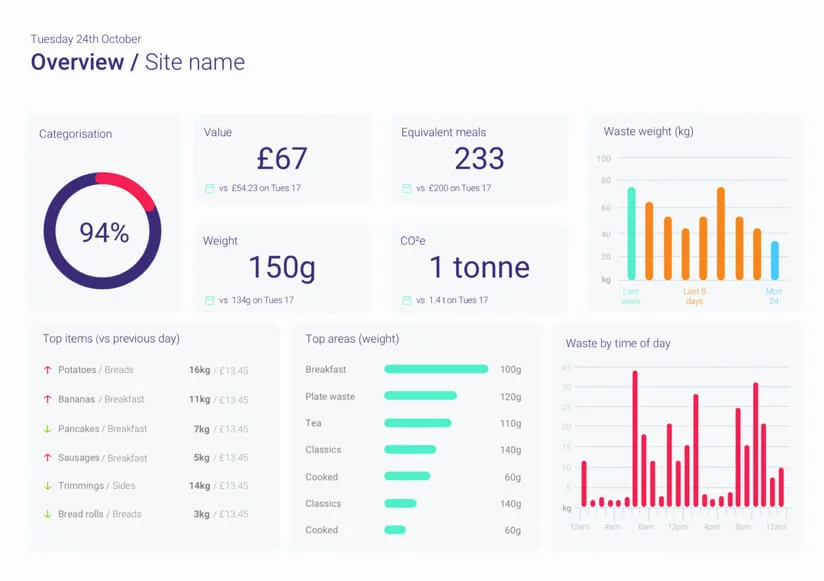
How quickly can food waste management software be installed?
Deploying food waste management software takes a matter of weeks. With Winnow, there is a ‘baseline period’ where the business operates as usual, and we establish the average level of food wastage.
This data is vital in working out the percentage of future reductions and the return on investment for using the software. This ranges from anywhere from 2-10 times return on investment for Winnow’s clients. Customers can expect to break even on our fees shortly after the second month of operations.
On some of the larger sites we’ve worked on for over six months, we’ve reduced food waste by 65% on average.
How we've helped clients reduce food waste in their industry
Winnow is the leading food management solution for the contract catering, hotels & casinos, quick service restaurant, supermarket, and cruise ship sectors. Find out how we've helped our clients.
Frequently Asked Questions
What are the benefits of food waste management?


There are three main benefits to managing food waste in kitchens; reduced cost, reduced environmental impact, and improved operational efficiency. Having a constant pulse on what is wasted throughout the day gives the kitchen teams more visibility, and ensures they can operate more sustainable and profitable kitchens.
How long does it take to have good waste management?


With insightful waste information in the hands of the right people, managing waste can happen quickly and significant reductions can be made. Within the first three months of installation, food waste technology can pinpoint the areas to target first and begin making significant reductions. Once the quick wins have been achieved, the next stage is for the data to identify areas of further optimisation before the waste level stabilises. On average clients reduced waste by over 50% in the first year.
What is the average food waste percent in restaurants?


Due to the lack of good data in the hospitality industry, there is not a clear and accurate figure for the average food wastage within restaurants. However, data analysed from Winnow kitchens in over 200 catering sites and 200 hotels shows that the average waste levels are between 8-12% of food spend.
How much could I save by managing food waste with Winnow?


Winnow’s data shows that on average kitchens waste between 4%-12% of all food purchased. Kitchens using Winnow’s analytics can expect to cut this in half in 6-12 months. This equates to an average saving of between $5k a year for a smaller site through to $50k+ for a large hotel or staff restaurant.



